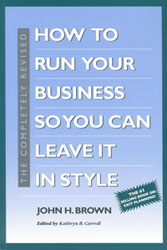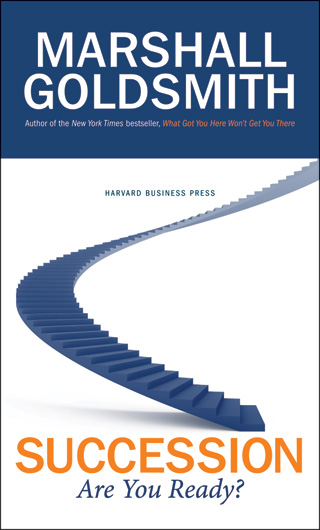Resources

Books:

Cash Out Move On:
Get Top Dollar And More
Selling Your Business
by John H. Brown

How To Run Your Business
So You Can Leave It In Style
by John H. Brown

Succession:
Are You Ready?
by Marshall Goldsmith
White Papers:
This White Paper discusses having your business owner client use the services of an experienced business appraiser to value their company as they transfer it to successor may help them avoid an unpleasant encounter with the IRS and help them to reap all of the value of their life's work. It also highlights the importance of how obtaining a value helps to dispel many of the common misconceptions that owners have about the value of their businesses and what the values mean to their overall exit plan.
This White Paper discusses four primary problems sole-owned and co-owned companies face when an owner dies or becomes disabled. It proposes solutions to each one of the four problems. This White Paper includes the "Business Continuity Instruction Form" for sole-owners.
This White Paper uses a fictional business owner to illustrate how an owner can use an ESOP to achieve three ownership objectives: 1) to cash out at fair market value; 2) to pay no taxes on the sale; and 3) to transfer the company to key employees. While examining how ESOPs work, their advantages and disadvantages, readers learn that ESOPs do not work for all owners or for every company. They do, however, provide opportunity for some owners to leave their businesses in style.
When owners think about exiting their companies, the number of exit routes might seem unending. In fact, there are only eight. This White Paper discusses the advantages and disadvantages of each one. Most importantly, it describes a process that enables owners to choose the best exit path for them.
At some point, every owner leaves his or her business - voluntarily or otherwise. This issue discusses the proven Seven-Step Exit Planning Process™ designed to achieve an owner's financial and other goals.
Owners wishing to sell their businesses to management (key employees) face one unpleasant fact: their employees have no money. Nor can they borrow any-at least not in sufficient quantity to cash out the owner. The transfer methods described in this White Paper employ a long-term installment buyout of the owner or use someone else's money to affect the buyout.
It is the job of every business owner to create value in his or her business prior to any transfer or sale. Exactly how do owners do that? read this White Paper to learn about those characteristics (or Value Drivers) that buyers look for when deciding how much to pay for a business.
